The Independent's journalism is supported by our readers. When you purchase through links on our site, we may earn commission.
Billie Holiday: The wild lady of jazz who adored England
On the 60th anniversary of Holiday's death, Martin Chilton reflects on her musical triumphs and personal hardships

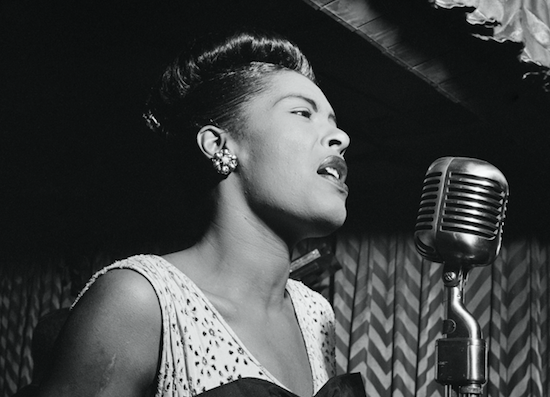
Your support helps us to tell the story
From reproductive rights to climate change to Big Tech, The Independent is on the ground when the story is developing. Whether it's investigating the financials of Elon Musk's pro-Trump PAC or producing our latest documentary, 'The A Word', which shines a light on the American women fighting for reproductive rights, we know how important it is to parse out the facts from the messaging.
At such a critical moment in US history, we need reporters on the ground. Your donation allows us to keep sending journalists to speak to both sides of the story.
The Independent is trusted by Americans across the entire political spectrum. And unlike many other quality news outlets, we choose not to lock Americans out of our reporting and analysis with paywalls. We believe quality journalism should be available to everyone, paid for by those who can afford it.
Your support makes all the difference.When Billie Holiday toured England in 1954, she went shopping in Nottingham ahead of her evening concert at the city’s Astoria Ballroom. A family friend called Betty Jones, wife of the esteemed jazz writer Max, was with her when they went into Marks and Spencer. Holiday picked out some pyjamas and went to the counter to pay. The strait-laced sales assistant was shocked to see a 38-year-old black woman haul up her skirt and produce a roll of banknotes from the top of her stocking. “It’s safer there,” she said, laughing loudly.
Holiday was a true one-off: a wild, outspoken and forceful woman, who also happened to be one of the greatest singers that ever lived. It makes it all the sadder that her final days were so painful and that she died such in such degrading circumstances in the early hours of 17 July 1959, at Harlem’s Metropolitan Hospital. She had been under arrest in her hospital bed for the previous five weeks. She was weak, underweight, bed-ridden and trying to fight off heart and liver failure problems at a time when police found a small tinfoil envelope containing heroin in a different part of the room. It was widely suspected that the drugs had been planted. She was interrogated by narcotics detectives. Her books, flowers, radio and record player were confiscated. She was finger-printed without her consent.
She was only 44 when her heart gave out. The singer who had recorded classics such as “God Bless the Child” and the civil rights anthem “Strange Fruit” had only 70 cents in her bank account. Her lifelong habits persisted, however, and even in hospital she had some ready cash strapped to her leg. She had been herself right to the end, joking with a musician on the eve of her death about writing a new song called “Bless Your Bones”. She also repeated to friends that she was seriously considering moving to England and buying a house in London.
Before being admitted to hospital she had been living at 26 West 87th Street, where the name on the doorbell was marked Eleanora Fagan, the name she used as a child growing up in a cramped home in Baltimore. She had been born in Philadelphia on 7 April 1915, to teenagers Sadie Fagan and Clarence Holiday. They separated when she was a young girl.
Her childhood was often brutal. She was sexually abused by a neighbour and had a tough time at the Catholic reformatory in Baltimore (she was forced to spend a night in a locked room with a child’s corpse in a coffin as a penalty for misbehaving) and went on to earn a living in a series of menial jobs. She also claimed to have worked as a prostitute in a brothel in Baltimore. “I was turning tricks as a call girl, but I decided I wasn’t going to be anybody’s maid,” she said in her own – often unreliable – memoir Lady Sings the Blues.
In 1929, Sadie and her daughter moved to New York. Sadie worked as a maid and her teenage child eked out a living scrubbing floors. Billie Holiday got her first break when she asked for work as a dancer at Jerry Preston’s Log Cabin. Although she failed the audition, the pianist, taking pity on her, asked if she could sing. The girl who had grown up adoring the music of Bessie Smith and Louis Armstrong delivered a fine version of “Body and Soul” and was immediately hired for $2 a night.
At the time, to avoid confusion with her father – who by then was working as a guitarist and banjo player with Fletcher Henderson’s jazz band – she sang under the name Billie Halliday. She told musicians that she was called Billie because Clarence had wanted a boy and used to call her Bill – and bandleader Count Basie always referred to her as “William” – and told journalists that she had adopted the name of her favourite film star, Miss Billie Dove. By the time she appeared at Harlem’s famous Apollo Theatre, aged 19, she was billing herself as Billie Holiday.
The young singer was profane, promiscuous, alcoholic, unpredictable and fearless. After signing with Louis Armstrong’s manager Joe Glaser, she resisted attempts to soften her singing style. “Look you son-of-a-bitch,” she told Glaser, “I’m going to sing my way”. She was no stranger to violence. After being hired for a run at the Grand Terrace in Chicago in June 1936, for $75 a week, she was told by club owner Ed Fox that he didn’t like her style of singing. He screamed at her after a show, “why the f*** should I pay you $250 a week to stink my goddamn show up? Everybody says you sing too slow. Get Out!” She began hurling office furniture at him, before walking out.
Her natural singing style and the timbre of her voice was completely individual. Oscar Peterson said she had “a voice of pure velvet”. Holiday had an incredible sense of rhythm and an intuitive knowledge of harmony which enabled her to phrase songs in a unique, fresh and expressive way. Many top jazz musicians consider her to be the greatest tempo singer that ever lived. Holiday liked to sing a fraction behind the beat and musicians at a recording session in 1937 were staggered by the way she nonchalantly tackled songs that were completely new to her.
Enjoy unlimited access to 100 million ad-free songs and podcasts with Amazon Music
Sign up now for a 4 month free trial (3 months for non-Prime members)
Enjoy unlimited access to 100 million ad-free songs and podcasts with Amazon Music
Sign up now for a 4 month free trial (3 months for non-Prime members)
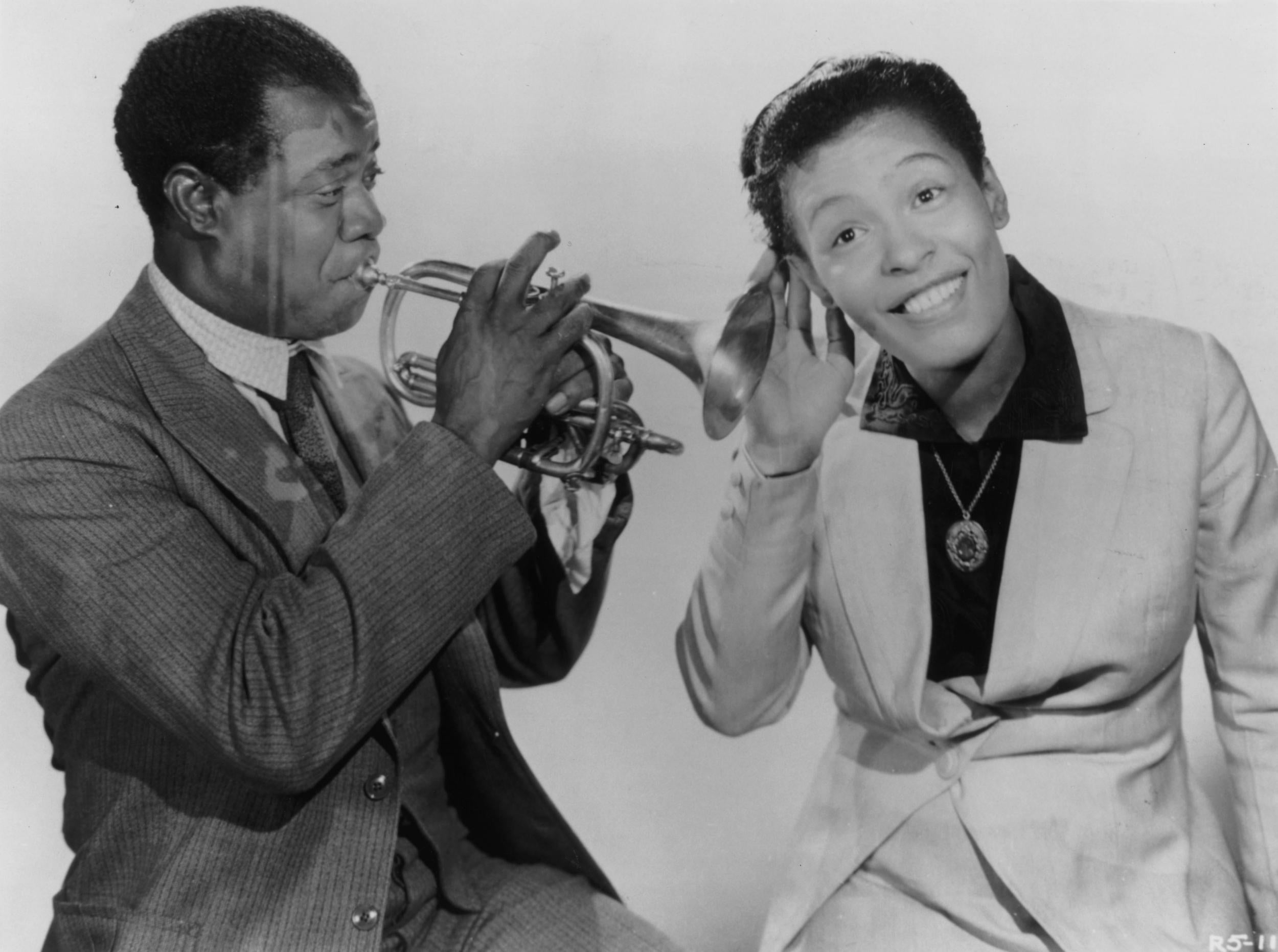
Holiday said she had always wanted her voice to sound like a musical instrument and was pleased when trumpeter Miles Davis praised her style by saying, “Billie Holiday doesn’t need any real horns, she sounds like one anyway”. Some of her recordings with Teddy Wilson in the 1930s – including “What a Little Moonlight Can Do” and “Miss Brown to You” – remain joyful masterpieces. “Billie Holiday is very rare,” said the late club owner and saxophonist Ronnie Scott, “she means every word she sings”.
She is responsible for some of the best jazz song recordings ever made. It says something about the brilliance she brought to so many songs that even experts are divided about her best work. Motown legend Berry Gordy believes it is “God Bless the Child”, a recording he said “spoke to me and in some ways changed my thought about life”. For poet Philip Larkin, it was her version of “These Foolish Things”.
For many, it is “Strange Fruit”, a song that portrays a lynching and the horrors of racism, and which became an anthem of the early civil rights movement. The song began life as a poem, written in 1937 by Abel Meeropol, then working as a teacher and writing under the name Lewis Allen. Meeropol approached Barney Josephson, owner of the Café Society in Manhattan, and said he had a song that would be perfect for the singer. He explained to Holiday why the harrowing lyrics, “Southern trees bear strange fruit / Blood on the leaves and blood at the root”, would have such power in her languid delivery. Holiday was won over, telling her bandmates, “some guy’s brought me a hell of a damn song that I’m going to do”.
She started singing “Strange Fruit” in 1939 – as the final song of her Café Society shows, with no encores. Her recording company, Columbia Records, were not willing to release a song about lynching but, fortunately, gave their permission for Holiday to record it for her friend Milt Gabler at Commodore. The recording, made in April 1939, is considered a landmark protest song. There is a picture in Down Beat magazine, taken around this time, of up-and-coming singer Frank Sinatra sitting in rapt attention at the Off Beat Room in Chicago listening to Holiday sing.
Although she was never overtly political in her public statements, she knew that “Strange Fruit” was controversial, a visceral expression of the plight of black Americans during an era of segregation and injustice. Holiday would never have been out of the news in the modern era and this black female singer stood up for herself in a way that was unprecedented in mid-20th-century America. When she was performing at the 55 West 52nd Street Yacht Club, a naval officer called her a “n*****”. He soon left, after she smashed the top from a beer bottle and threatened him with it. “Billie has had to fight all her life, and most people hate fighters, I can tell you,” said blues singer Josh White.
One of the biggest problems for Holiday as a singer was that she was never confident in her own abilities. My late father John Chilton, who wrote her 1975 biography Billie’s Blues, talked to dozens of her closest friends and said he was sure she suffered from chronic self-doubt all her life. She was sensitive to rejection or indifference – and usually reacted in her own spiky way
During one gig at the Café Society, she felt the crowd was not paying respectful attention. Holiday, who did not usually wear underwear on stage – a common trait among performers then, as it was so hot under the stage lights – suddenly exploded. She turned her back on the audience, bent over and flipped up her gown to give a full view of her bum. This was part of her pugnacious character. Singer Hazel Scott recalled Holiday advising her: “No matter what the motherf***ers do to you, never let ‘em see you cry.”
Although Holiday was idolised by jazz musicians by 1939, she was virtually ignored by the public at large. Clarinet player Artie Shaw believed this wounded her pride and said he thought that her failure to get a mass audience “was indirectly part of why she took drugs to ease the pain”.
Drugs gradually became a dominating factor in the singer’s life. She had smoked marijuana before she was 15 and by the time of “Strange Fruit” was consuming vast quantities, often nipping out to Central Park in the intervals of her shows to smoke freely. “This stuff is good, it comes from Dakar,” she told saxophone player Kenneth Hollon, before giving him some Senegalese dope. He said it was so strong, he was high for around five days. He drank gallons of water to recover.
The real trouble came when Holiday, who was also a big whisky drinker, took a lover called Joe Guy, a trumpeter with an opium habit. After opium, which affected her voice and made her vomit, her choice of poison became heroin. One of my father’s friends was trumpeter Buck Clayton, who was first hired to record with Holiday in 1937 and worked with her sporadically for the next two decades. He said that Holiday claimed heroin was not corrupting. “Come on Bucket,” she told him. “It will make you feel like you have never felt before.” He turned her down saying, “No lady, that’s not for me”.
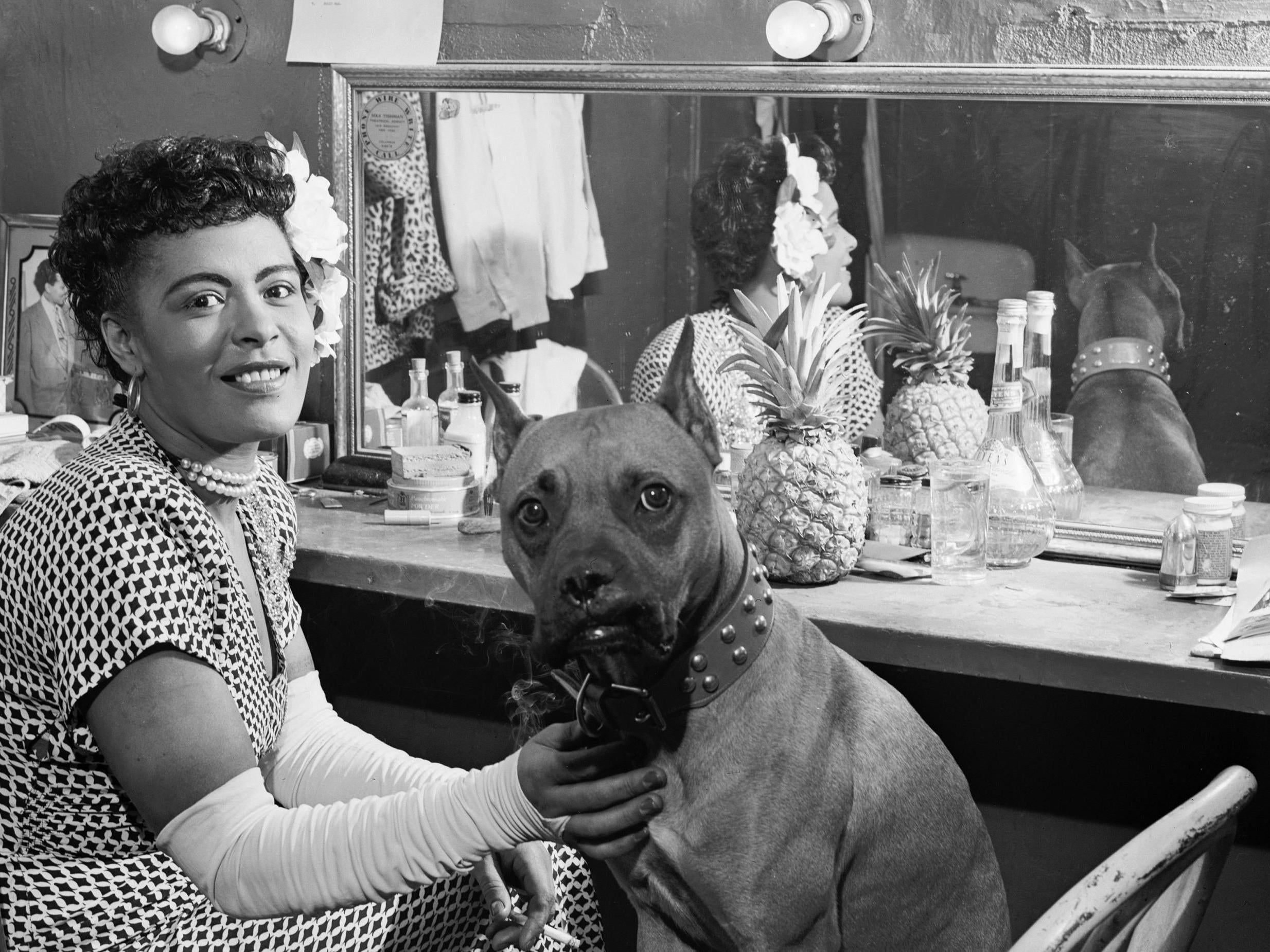
By the mid-1940s, with a failed marriage to the exploitative Jimmy Monroe behind her, she was spending $500 a week on drugs (about £5,500 a week now) and knew she was a mess. Her emotional life was fraught. Her father was just 38 when he died of pneumonia in 1937, although she was never particularly close to the musician known as “Lib-Lab” for his womanising. What really broke her heart was the death of her mother, then 49, in 1945. Holiday’s drug habit only got worse without Sadie around.
In 1947, she admitted herself into a clinic to try to kick the habit. A few weeks later she was using again. Days after playing a prestigious gig with Louis Armstrong, she was arrested by New York Police Department’s Narcotics Squad at Hotel Grampion, when they found 16 capsules of heroin in her stocking.
She was sentenced to a year and a day in the federal Reformatory for Women at Alderson, West Virginia. Her records were banned on radio stations. The addiction cure at the prison was, she said, “like going through hell”. She worked in the kitchens and looked after the pigs, serving nine and half months before being paroled. The conviction meant she was banned from performing in New York. She was simply unable to obtain a police card – mandatory for any performer wanting to play in the city’s nightclubs.
The New York ban remained a sore point for the rest of her life – and was one of the reasons she was contemplating relocating to London before she died. “Singing’s the only thing I know how to do and they won’t let me do it. Do they expect me to go back to scrubbing steps – the way I started out?” she told Max Jones. Her reputation for being unreliable at turning up for gigs only increased. Trumpeter Henry Red Allen, who had played in a band with her father and recorded with her, was among those appalled by her unpunctuality.
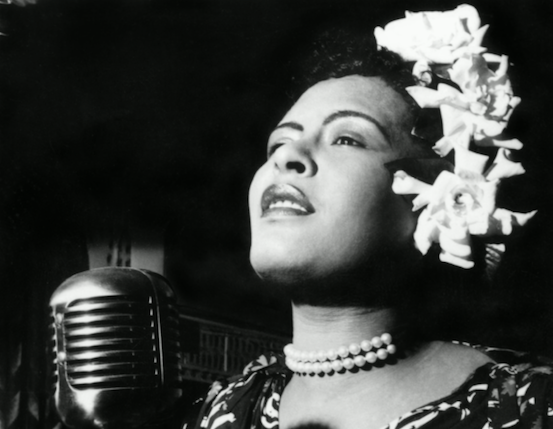
After getting out of prison, she attempted to stop using the needle but her solution was to increase her intake of alcohol. She was soon downing two bottles of spirits – brandy, gin or vodka – every day. She started having difficulty controlling her pitch. Her behaviour was erratic. When Oscar Peterson first met her at a party at her apartment in 1950, she was hurling bottles of Coca-Cola at a man lying at the bottom of the stairs. “Oh, just step over that son of a bitch and come right up, honey,” she told the startled young Canadian pianist, before changing tack and asking him about the music scene in Montreal.
Holiday never had much luck with men but she remained philosophical. Reflecting on her first marriage, she noted that “Jimmy was no more the cause of my doing what I did than my mother”. She slept with lots of musicians, many of whom remained friends. Roy Eldridge had known her since visiting her mother Sadie in Baltimore when Holiday was only 14. He used to sit in with her at Hot-Cha club in New York when she was starting out. They had an affair in 1937, when they recorded together, a liaison that broke up, he told my father, “when Billie found herself in love with a girlfriend”. Holiday was never secretive about her love life. She talked about having female lovers during her prison spell and told Max Jones about the relative sexual prowess of past musician partners.
The young singer was profane, promiscuous, alcoholic, unpredictable and fearless
She was often the victim of appalling violence. During their stormy affair, saxophone player Ben Webster assaulted her, leaving Holiday bruised and with a black eye – prompting Sadie to get “real mad”, in his words, and attack him with an umbrella. In 1949, her manager John Levy gave her a black eye and stole her $18,000 silver-blue mink coat. Her second husband Louis McKay, whom she wed in 1951, also gave her a shocking black eye.
Larkin, who said he loved the way that her singing expressed “all the human feelings” of the songs she recorded, nevertheless believed her unhappy life led her to “specialise to an almost masochistic degree in songs of rejecting and yearning”. Musicians would sometimes be shocked by her taste for victimhood. In her apartment, pride of place was given to a gruesome painting that showed the severed head of a Chinese soldier lying in a street after a battle with Japanese warriors.
Author Zadie Smith, a former singer who used to do Billie Holiday impressions when she performed in old people’s homes and bars, told The New Yorker in 2017 that she loved the song “Crazy He Calls Me”, because “it’s such a beautiful, masochistic song… you can hear all the suffering laid out right next to the declaration of love. You can replicate the phrasing but you can’t come anywhere near that tension between delight and pain that she had.”
It is misguided to see her merely as a victim. Musicians loved the ebullient and witty woman who was such a unique character when she worked and travelled with them. Her language was earthy – “s*** or get off the pot,” she told trombonist Clyde Bernhardt when he was prevaricating about whether to join her band – and pianist Jimmy Rowles recalled a woman who “swore a lot and loved dirty jokes”.
She had some great platonic friendships with musicians, notably with the master saxophonist Lester Young. They would swap jokes and stories as they smoked dope together. Their 1937 recording of “I Must Have That Man” is one of Holiday’s greatest performances. It was Young who nicknamed her “Lady Day”. She called him President, or “Pres” as he became known.
When she toured with the Count Basie band, the famous bandleader recalled having a good time with Holiday and said she was a first-class cook. Trombonist Benny Morton said Holiday would play card games and shoot craps with the men in the aisle of the tour bus “and she used to win all the money”. Coleman Hawkins remembers her ability to wisecrack. Even when she was in bad shape in 1957, Hawkins recalled, she was still able to make all the musicians laugh backstage during the filming of the CBS television special The Sound of Jazz. They were all drawn to her natural magnetism.

Holiday loved being in front of the camera. She had appeared as an extra in a Paul Robeson film as a young girl – and was terrifically excited when she got to know Orson Welles at the time he was preparing to make Citizen Kane. Welles, who would let Holiday watch him rehearse scenes from the film, told her he had been in talks with Duke Ellington about a jazz film called It’s All True. Welles said he wanted Holiday and Armstrong to be a key part of his project, but sadly it never materialised.
When she got her shot at a Hollywood movie – along with Armstrong – it was in the 1946 film New Orleans, starring Arturo de Cordova, Dorothy Patrick, Irene Rich filmed at Hal Roach Studios. Typically, two of the greatest black entertainers of the 20th century were given roles as servants. Holiday played a maid, Armstrong a butler.
Away from the stage, Holiday loved luxury Coty perfumes, expensive bath oils and fur coats. She was an impulse shopper, once spending a fortune on matching shoes and a handbag made of crocodile skin. She also had a passion for pets. Her dogs – a boxer called “Mister”, a mongrel called “Rajah Ravoy” and a Chihuahua called “Pepi” – became well known among jazz musicians. “Her animals were really her only trusted friends,” remarked singer Lena Horne. Holiday became friends with Corky Hale in the 1950s and the female pianist recalled Holiday putting doll’s diapers on Pepi and saying “my baby looks ill”, as she fed the dog with a small bottle and teat. “You know I never had a child,” Holiday said.
Holiday always had a soft spot for her British fans and musicians here and she would answer fan mail from the UK all her life, sometimes with remarkably candid comments in her handwritten letters. She wrote to English bass player Jack Surridge in June 1939 about her depression, revealing the nasty comments she sometimes heard. “Nothing anyone would say could make me feel any worse than I do,” she admitted.
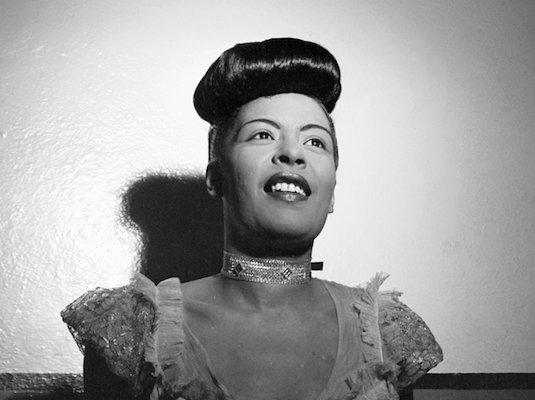
When she toured England for the first time in February 1954 she was excited and appreciated being met by Max Jones at London Airport, especially as he brought her a bottle of whisky. Although her reception from news reporters was hostile – at her first press conference at Piccadilly Hotel a reporter opened proceedings by asking “are you still on dope?” – she remained upbeat. “I didn’t come three thousand miles to talk about that s***,” she told Jones.
Jones and his wife Betty saw all of her successful short tour. When the microphone failed at the Manchester Free Trade Hall, she sang “My Man” solo at the front of the stage, to wild applause. After Nottingham she returned to London and enjoyed sightseeing in Bloomsbury, shopping at Simpsons (she bought a ski suit and knitted cap) and drinking treble brandies with Cointreau floats at Studio Club in Swallow Street. She told Jones that she never went to people’s houses to socialise, because “the drinks don’t come fast enough, honey, and you can’t leave when you want to”.
When she played the Royal Albert Hall on Valentine’s Day 1954 she was overwhelmed by the warmth of the reception. She loved “the awareness” of English audiences and their appreciation of her music. “I want to settle in Britain, because I love the people. They call me an artist not just a singer,” she said.
Things went downhill when she returned to America. In February 1956, in Philadelphia, she was arrested again on drugs charges. She and husband Louis McKay had separated and she was often alone in her apartment, drinking, smoking dope and watching cartoons. She had once described herself as a “healthy, fat girl”. Now her weight was down to under eight stone. Dr Herbert Henderson, who saw her when she was playing at Black Hawk Club in San Francisco in September 1958, told her she had cirrhosis of the liver.
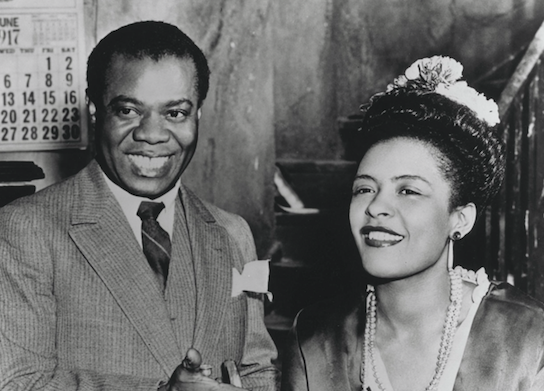
A few weeks later, fans at The Monterey Jazz Festival were shocked by her gaunt appearance. She was shrunken to the bone. In one last desperate attempt to get some money she returned to Europe. She was booed off by an audience in Milan. In her final show, at Phoenix Theatre in Greenwich Village on 25 May 1959, she had to be helped off after two songs.
Her life can seem pitiful – Oscar Peterson lamented seeing this genius “lost deep in the stupor of drugs” and even wrote a tribute poem to her Lady Day about how “her torture was in life” – but she was always phlegmatic about her own fate. She lived recklessly and accepted the consequences. One time, for example, after earning a big recording fee in California, she and trombonist Trummy Young blew all the money celebrating. Holiday had to get Sadie to wire them the bus fare home. “Can you imagine riding a bus for 3,000 miles,” said Young.
Holiday’s life was a long, hard journey. But Roy Eldridge was also adamant that she was “no tragedy queen”. She loved singing, often skipping lucrative jobs to join jam sessions with musicians, such as Lester Young and Buck Clayton, that she adored. In her first gig after prison, a comeback at Carnegie Hall, she sang 21 songs and earned six encores. Pianist Bobby Tucker described playing with her that night as “the musical treat of my life”.
She really is worth the praise heaped on her by other singers and musicians. “Billie Holiday is the greatest single musical influence on me. Lady Day is unquestionably the most important influence on American popular singing in the last 20 years,” said Sinatra, just before her death.
When she started out professionally, singing at Monette’s Supper Club on 133rd street in Harlem in 1933, she would go to tables and sing to diners individually, like a fiddler in a Budapest café. What an experience that must have been for discerning customers. As singer Carmen McRae said: “The only time Billie is at ease with herself is when she sings.”
Join our commenting forum
Join thought-provoking conversations, follow other Independent readers and see their replies
Comments